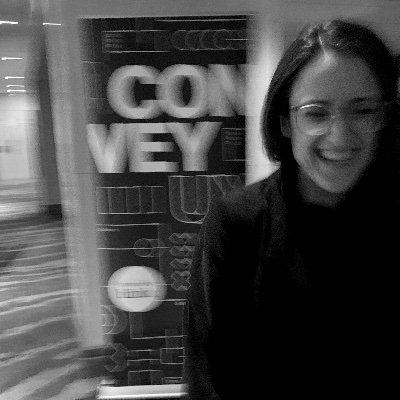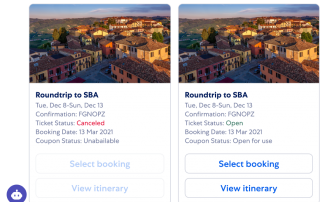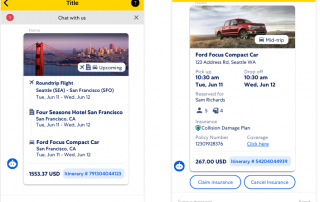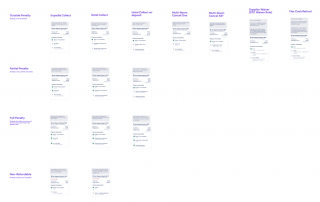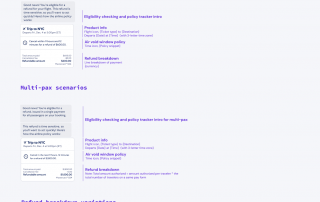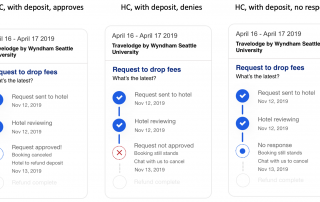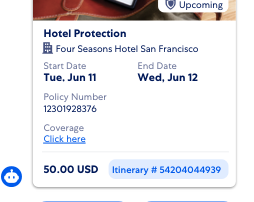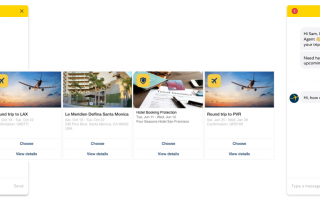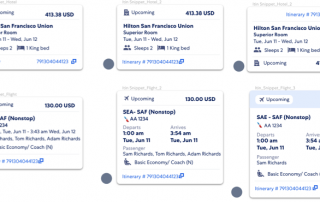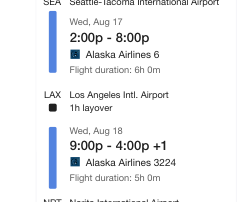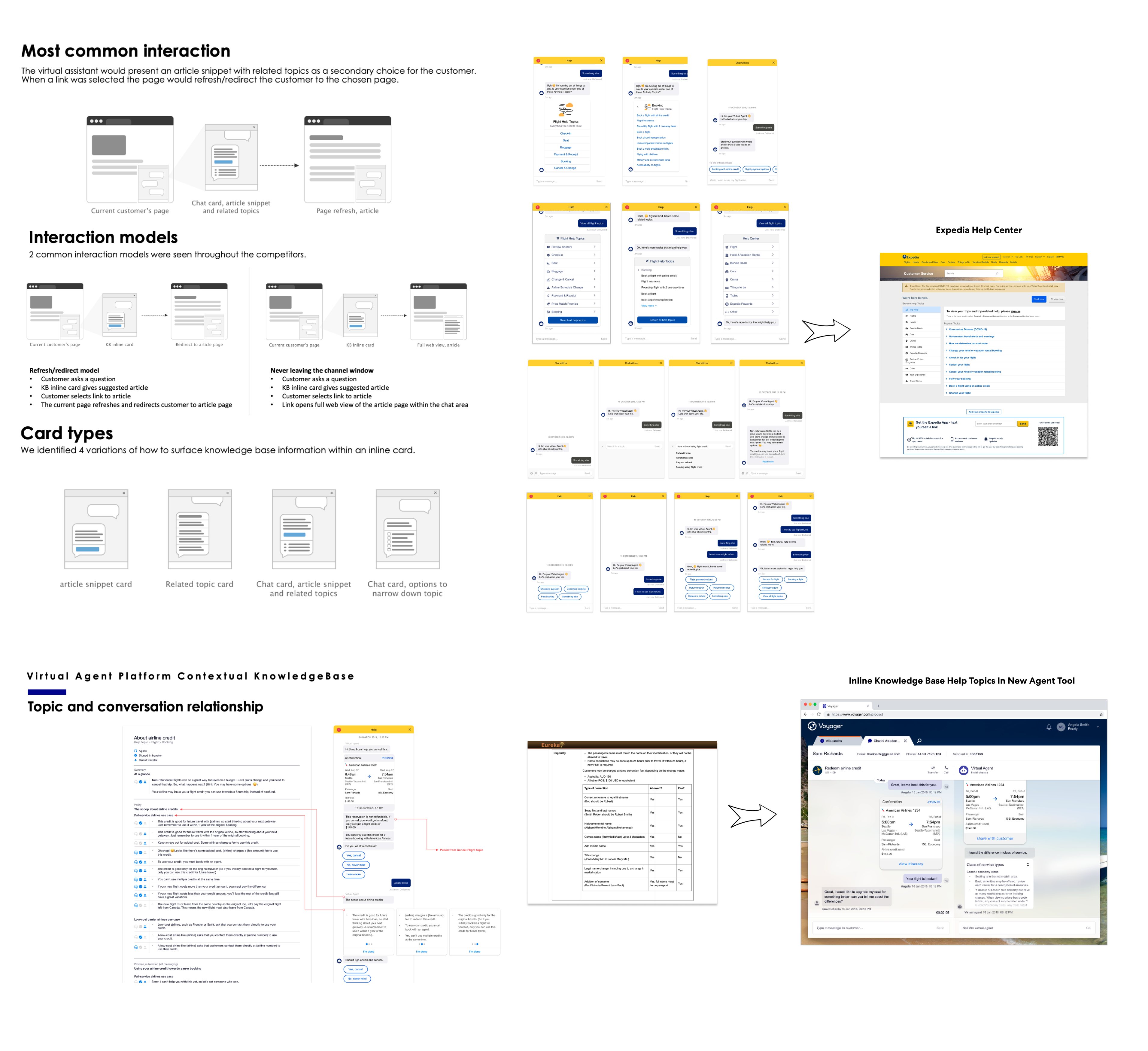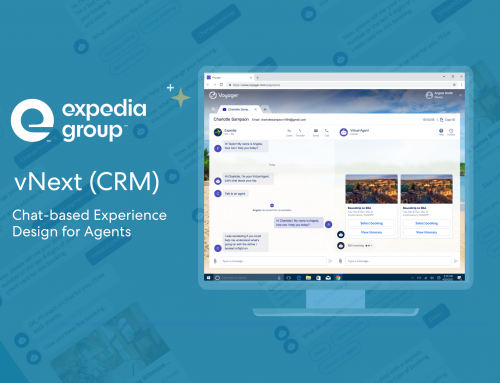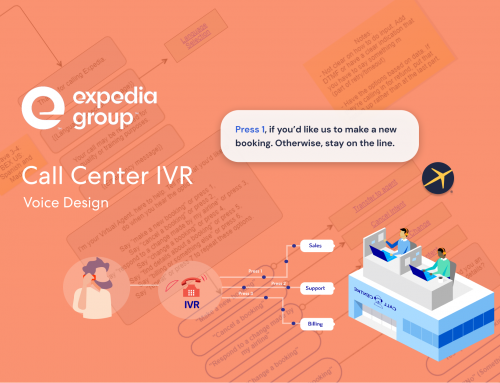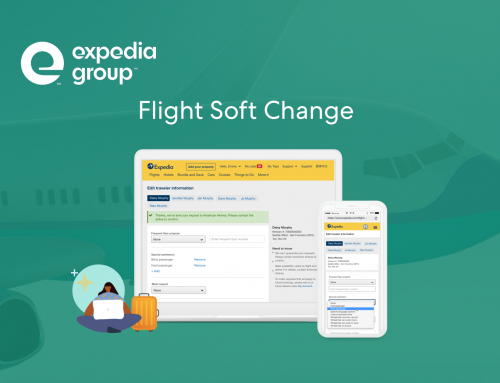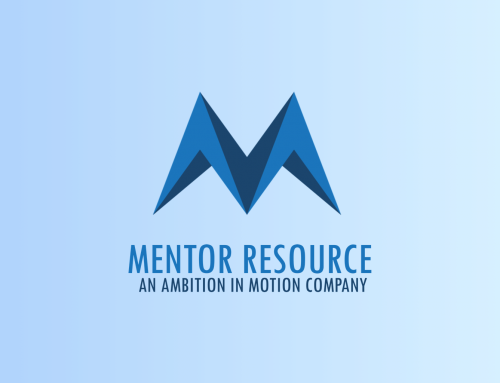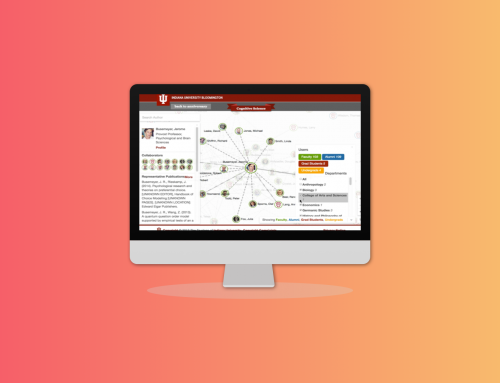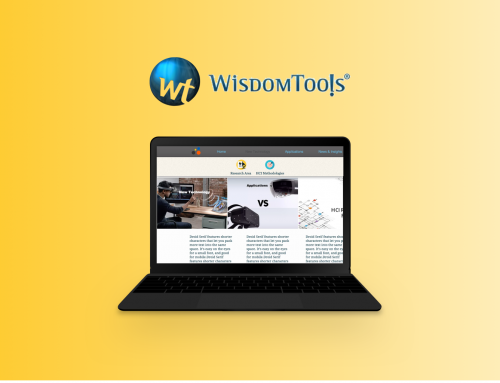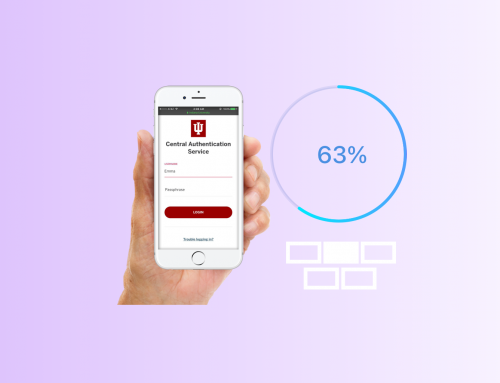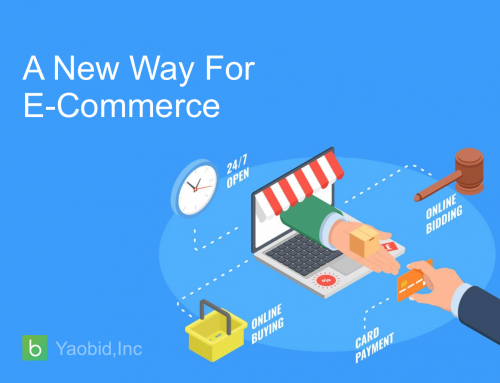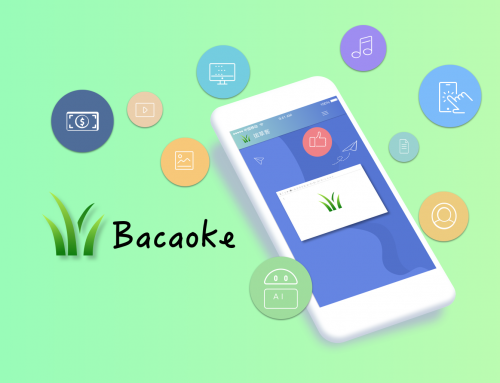Project Description
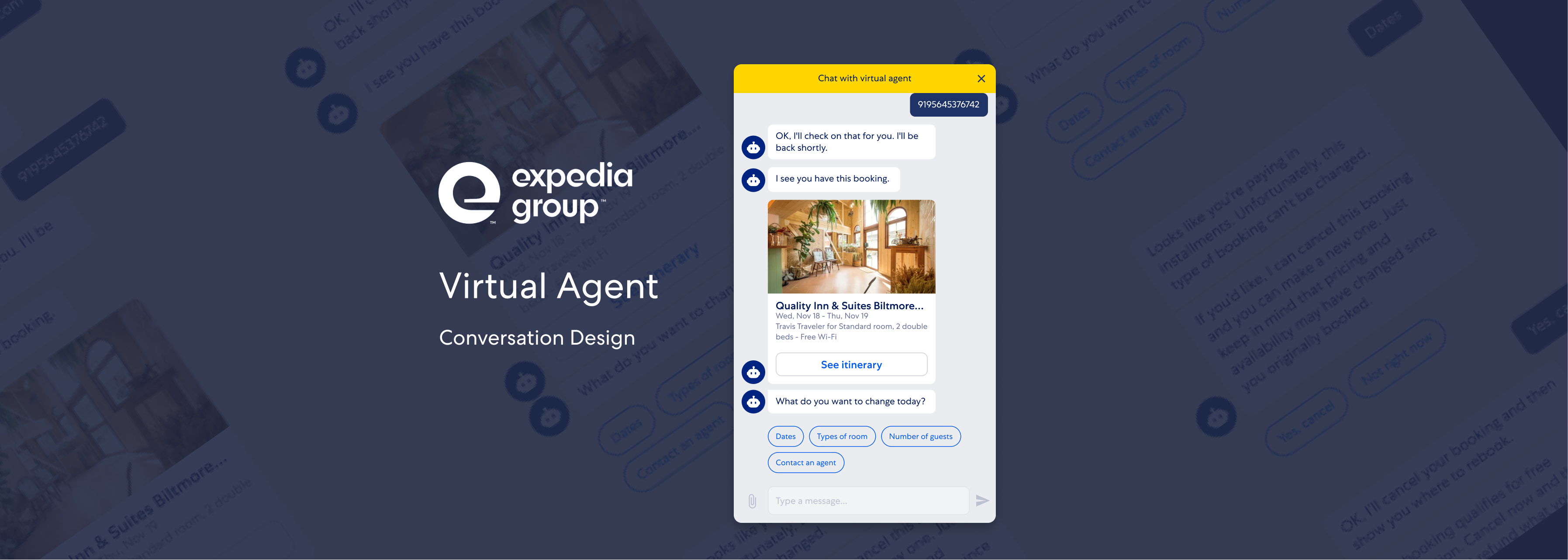
Overview
We know travel and use conversation to empower our travelers, partners, and agents with our deep expertise. We apply traveler insights and smart technology to deliver personalized and seamless experiences. Conversation design is a design language based on human conversation. The more we leverage human conversation in an interface, the easier it is for users to learn how to use it. It synthesizes several design disciplines, including voice user interface design, interaction design, visual design, motion design, and UX writing.
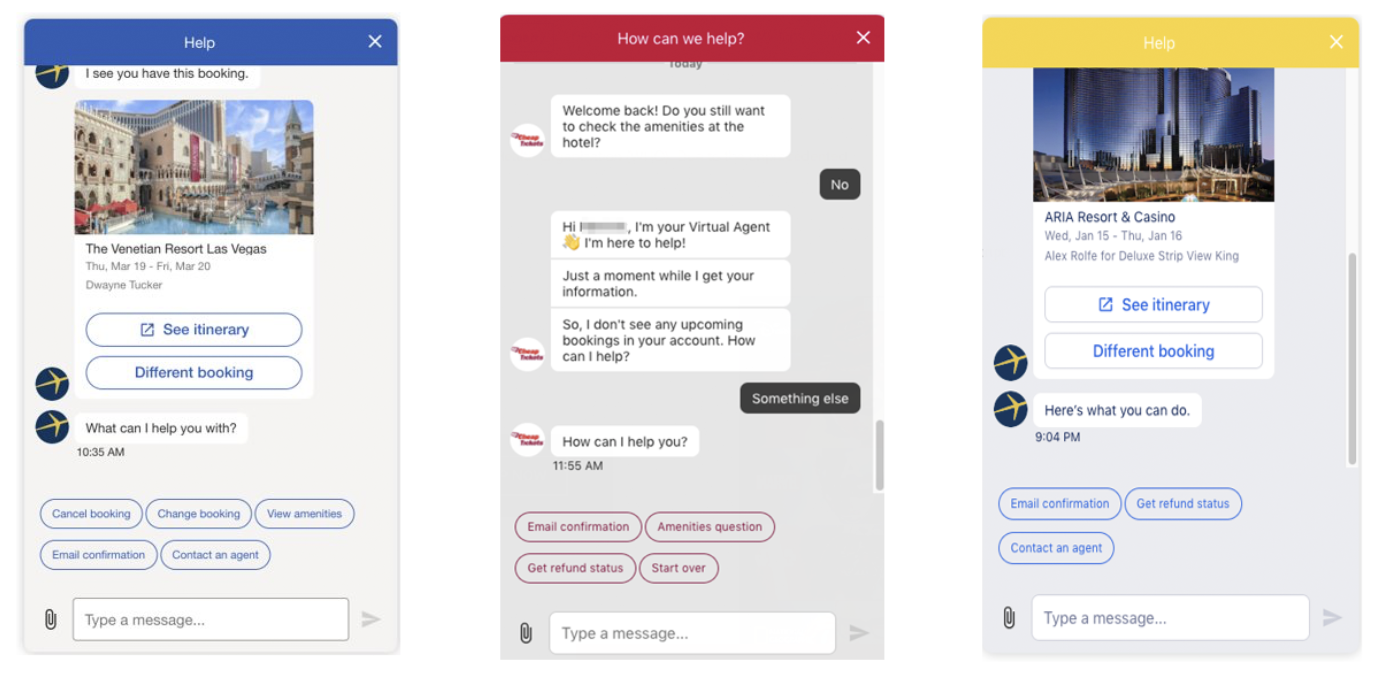
The conversation design works I have done in the Expedia Conversation Design team include two parts: Virtual Agent Control (VAC) Foundations and Automated Journey Skills. Below are some of the main products that I lead the effort to design, and I collaborate closely with content strategists, researchers, product owners, engineers, service delivery, and brand strategists when crafting these new features and products for our virtual agent.
Please enjoy!
I had the pleasure of working with Emma at Expedia Group. During the time Emma reported to me, I saw her take on extremely complex projects that were scoped beyond Emma’s ‘seniority’ — she embraced each challenge with an unmatched focus and determination. Emma went above and beyond to overcome communication barriers with her engineering and product team. With her soft and well-rounded demeanor, Emma was able to bring the team together to over-deliver on what they originally had intended. I was in awe with her ability to get things done as a product designer. Emma fully embodies Expedia Group’s leadership principles of being humble, staying positive, and being bias to action. It would be an honor to cross paths with Emma again. I highly recommend her to any team that appreciates having a competent, warm, and caring colleague.
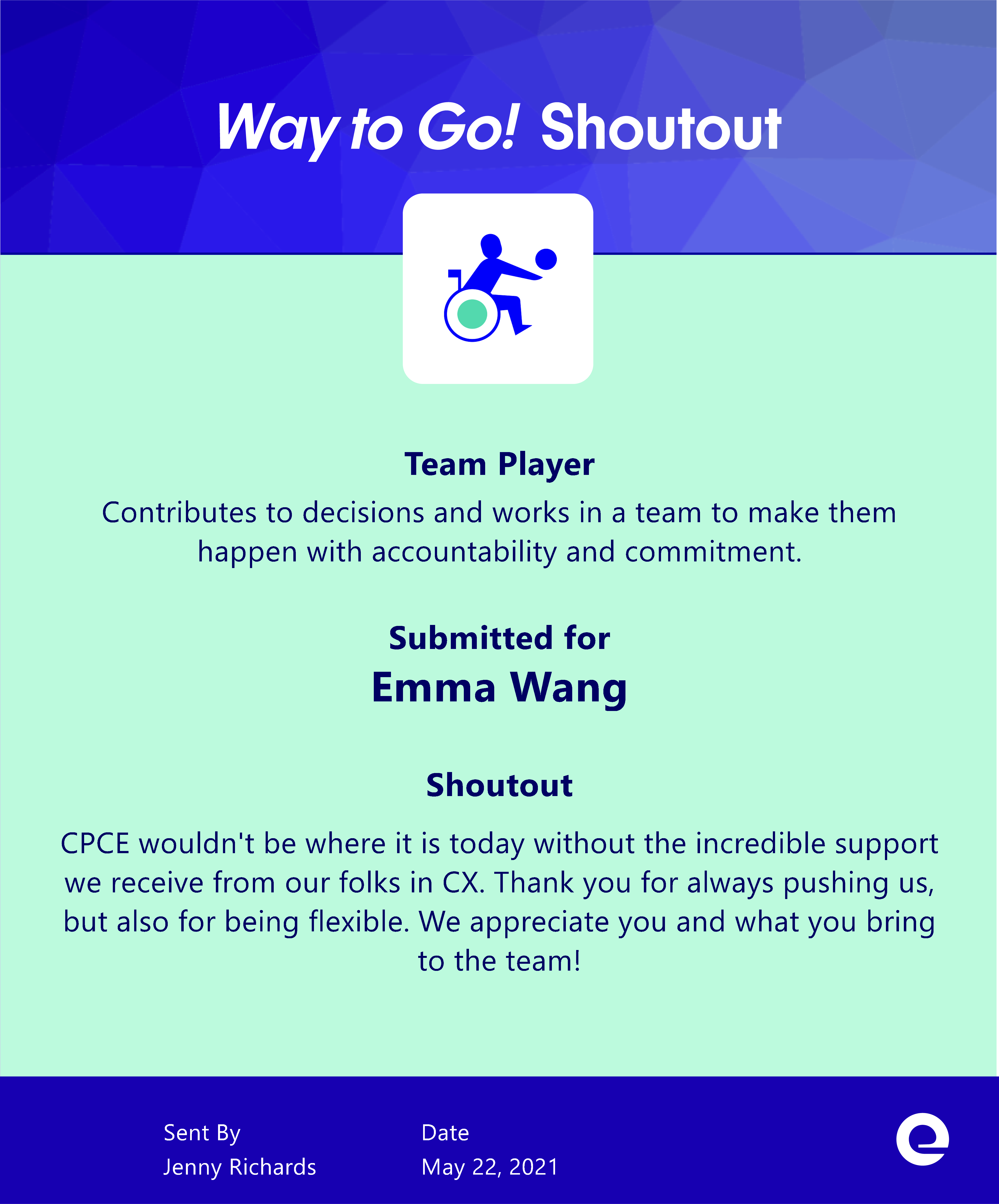
VAC Foundation Design
The goal for designing VAC Foundation is to craft reusable, flexible design components for virtual agent visual experience that satisfy complex business and technical requirements, without sacrificing the usability, personality, and soul of the experience.
The products I have worked on include Inline Knowledge Base Card, Retrieve Booking Carousel Card, Itinerary Snippet Card, Refund Tracker, and Policy Tracker Card.
Future Expedia Help Center
In addition to the interactional inline card design, I also got the opportunity to partner with the content strategist experts who wrote the knowledge base articles, to explore how to involve knowledge base hot topics in the Virtual Agent Platform to build a contextual experience for both travelers and agents. The work includes conducting user research, competitive analysis, defining the interaction models, card types, and more.
Automated Journey Skills
Automated Journey Skills are the conversation design experiences for Expedia’s virtual agent chatbot that enables travelers to do post-booking cancellations and complex exchanges to their hotels and flights. The goal is to provide users a trustworthy, contextual, and natural confidently conversational experience that enables them to quickly make self-service actions thru virtual agent online without calling agents for help.
I listed some shipped products I have worked on below, and I am the design POC of all these products.
Air Credit Redemption
MVP: Apr. 2020- May 2020; Fast-follow: Jun 2020 – Oct. 2020
Due to COVID-19, Expedia is experiencing significantly higher than forecasted call volumes. This is leading to extremely long hold times and customers feeling abandoned, unheard and unserved. For example, as of March 11th alone, we are already 164% over the forecast for U.S. queues alone, with an abandon rate of 69%.
From the call center data, we know a large number of customers’ flights got canceled by airlines and refunded as airline credit. Customers want to redeem their airline credit with Expedia quickly and easily for a new flight so that they are confident that they can take full advantage of my airline credit. How can we address the 9M+ flight cancelations that occurred due to the COVID-19 pandemic that resulted in airline credit for the customer at scale? How might we soothe customer anxiety to use their airline credit so they don’t feel like they’ve lost any money?
At the time, Expedia didn’t have any self-service experience on the web or mobile enabling customers to redeem their airline credit. The customer needs to call the Expedia agent, and a call center agent must redeem the airline credit on behalf of the customer. As the COVID-19 Response, I led the virtual agent chat-based experience design for airline credit redemption, allowing customers to self-serve at their own leisure without having to wait on-hold to be assisted by a human agent.
The product launched for multiple POSs and brands and has made a huge impact during the crisis.
- MVP launch: gain a 48% self-service rate and 64.4 NPS score
- by the end of 2020: achieve $0.19 unit cost reduction, 38% NPS increase, 576% reporting usage and adoption increase, and 25% self-service capability increase
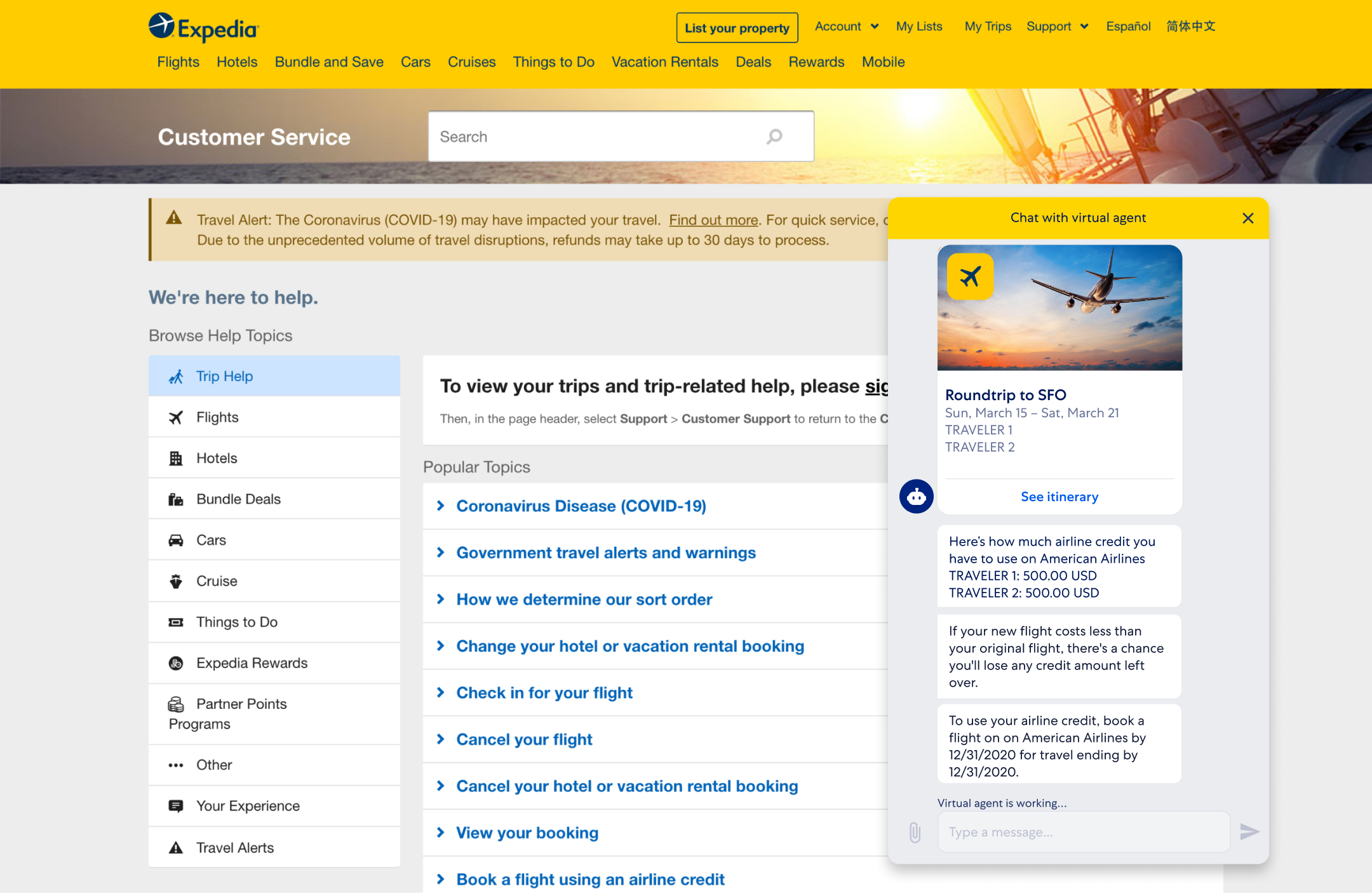
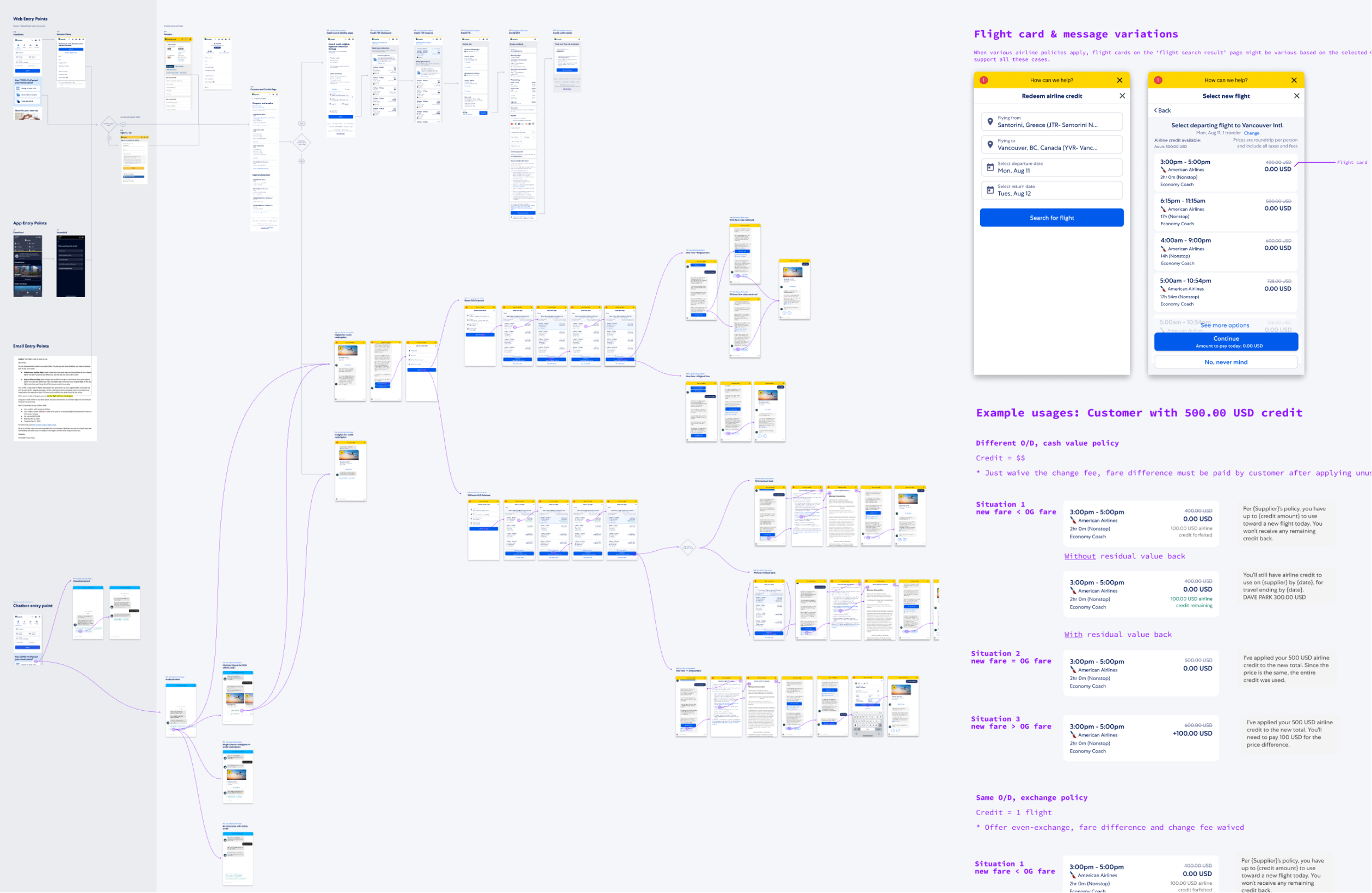
Drag & Click to see the magic ☝

Workflow example shows one of the eight scenarios: customer chooses different origin and destination to redeem airline credit.
Flight Exchange
Jul. 2019 – Nov. 2019
In the year 2017-2018, Expedia Group built and launched self-service flight change on US and Canadian POS. According to a usability study we ran in 2018, the existing air change experience available through the web and mobile is hard to find which prevents some customers from engaging with self-service. In this project, I led the effort to design a context-based experience that enables customers to do flight exchange through the chatbot. By migrating the functionality to the Virtual Agent Platform (VAP), we’ll be able to increase our self-service adoption by having additional and more intuitive entry points and be able to expand to other points of sale more rapidly.
How does it work? If a flight is eligible for change, the Virtual Agent Platform will allow customers and agents to do it as easily as it is to book a brand new flight. There wouldn’t be any complications with specific use cases (i.e. bookings with infants, multi-destination flights, changing for less than all travelers, waiver scenarios, extenuating circumstances, etc.). Customers don’t need to contact an agent to change their flight because they’re simply able to do it themselves. Flight changes for agents and customers should follow this very basic pattern:
- Select the flights and travelers you want to change
- Input your new criteria (dates, times, origins, destinations)
- Select the flight that best suits your needs
- Pay for the flight in your preferred form of payment, if payment is necessary
- Receive a confirmation that the flight has successfully been changed and your new itinerary
Impact:
- contribute to meeting the goal to enable customers to self-service 90% of travel post-booking intents.
- save $1.2 M of labor costs for Expedia Group in 2020
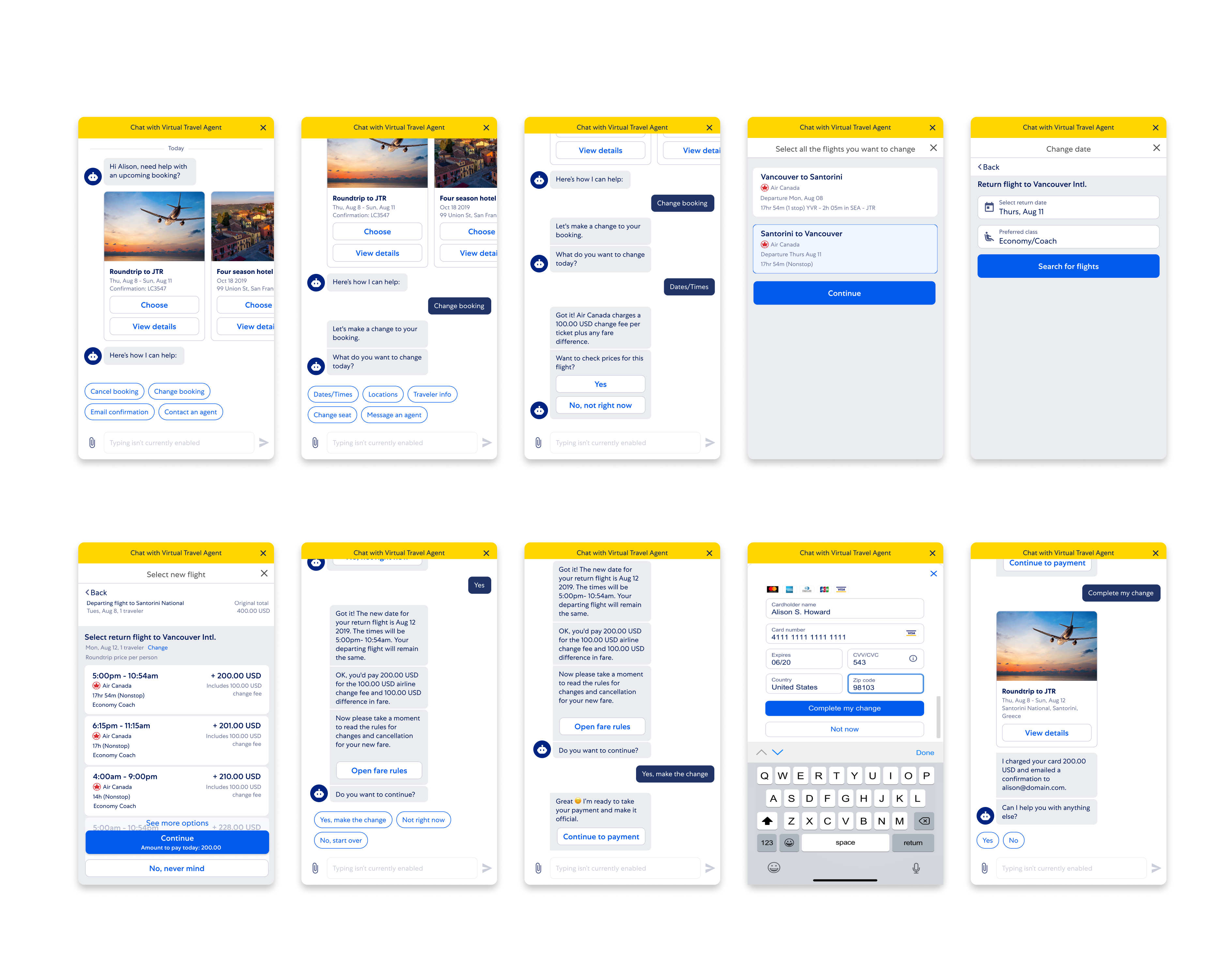
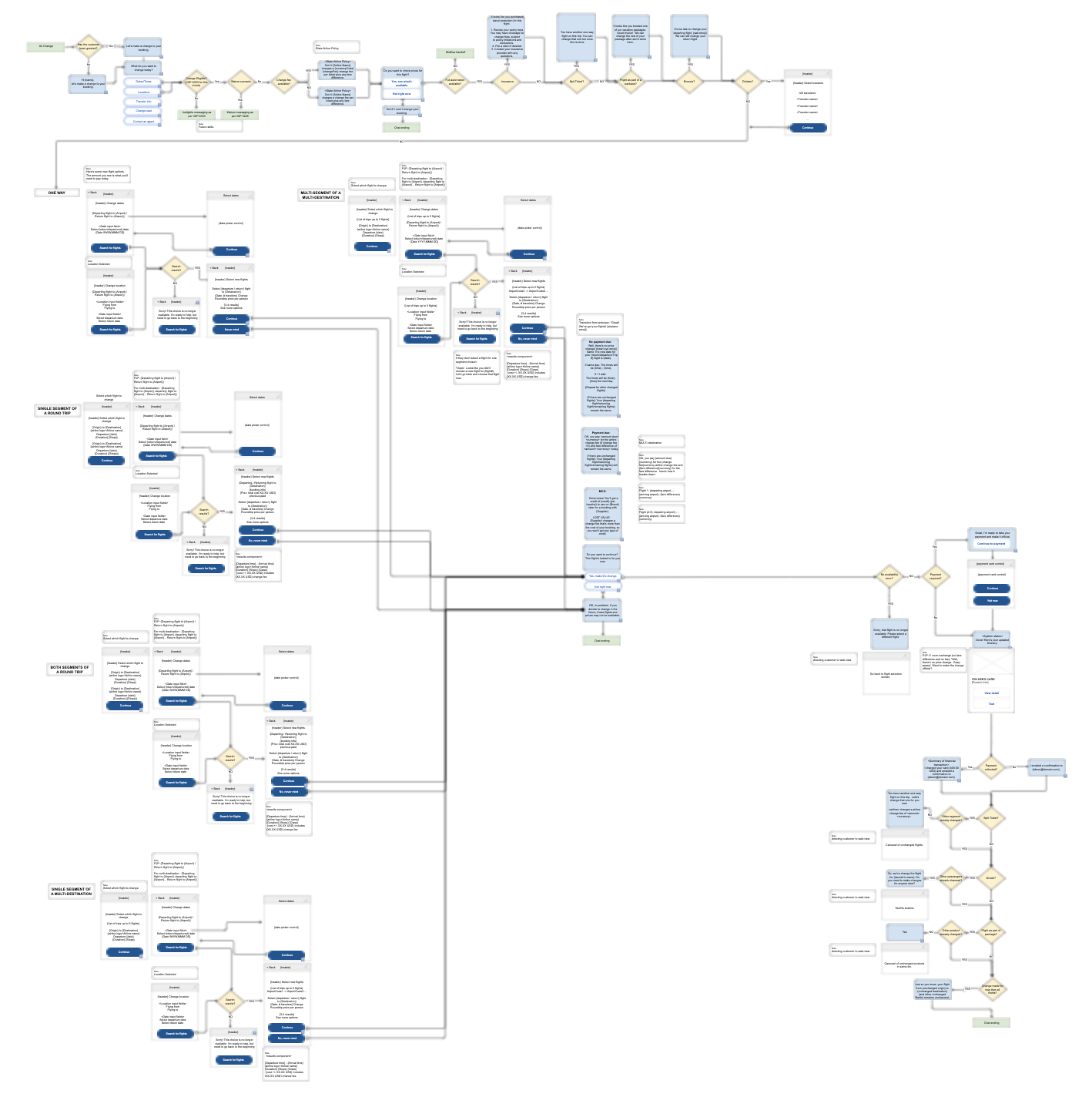
Lodging Cancel with Waiver Request
Mar. 2019 – Aug. 2019
By the time I started this project, Expedia customers who booked a non-refundable hotel can only obtain penalty waivers by contacting an agent if they want to cancel their booking. The agents then need to call the hotel to request a waiver. This is a time-intensive and costly way of handling a relatively common scenario. Additionally, hotels do not appreciate that we rely on phone calls for waiver requests as this leaves a minimal paper trail. Based on this, why don’t we design an experience to automate the waiver request process and remove the needs of an agent? By building this, Expedia Group will reduce operational costs, provide a simpler customer and supplier experience, and an additional ~5% self-service capability.
This project is very eye-catching since it is the first post-booking chatbot experience we built in the Virtual Agent Platform. Since we were still on the explore mode at that time, as the design POC, I not only designed the North Star complex experience but also explored the very early stage of the conversation interaction design (message bubbles + quick replies, Itin summary card, refund request tracker) and partnered with content experts to explore the content guideline best practice (message bubble character limitation, voice, and tone, etc.). I presented this project multiple times in front of our VP, and the project was nominated twice at the Expedia Townhall by our CEO Mark Okerstrom.
Impact:
- contribute 7% self-service capability improvement to the organization goal
- increase the self-service rate of automated change and cancel lodging journeys from 75% to 85%
Watch the video to see the entire experience for brand Hotels.com ☝️
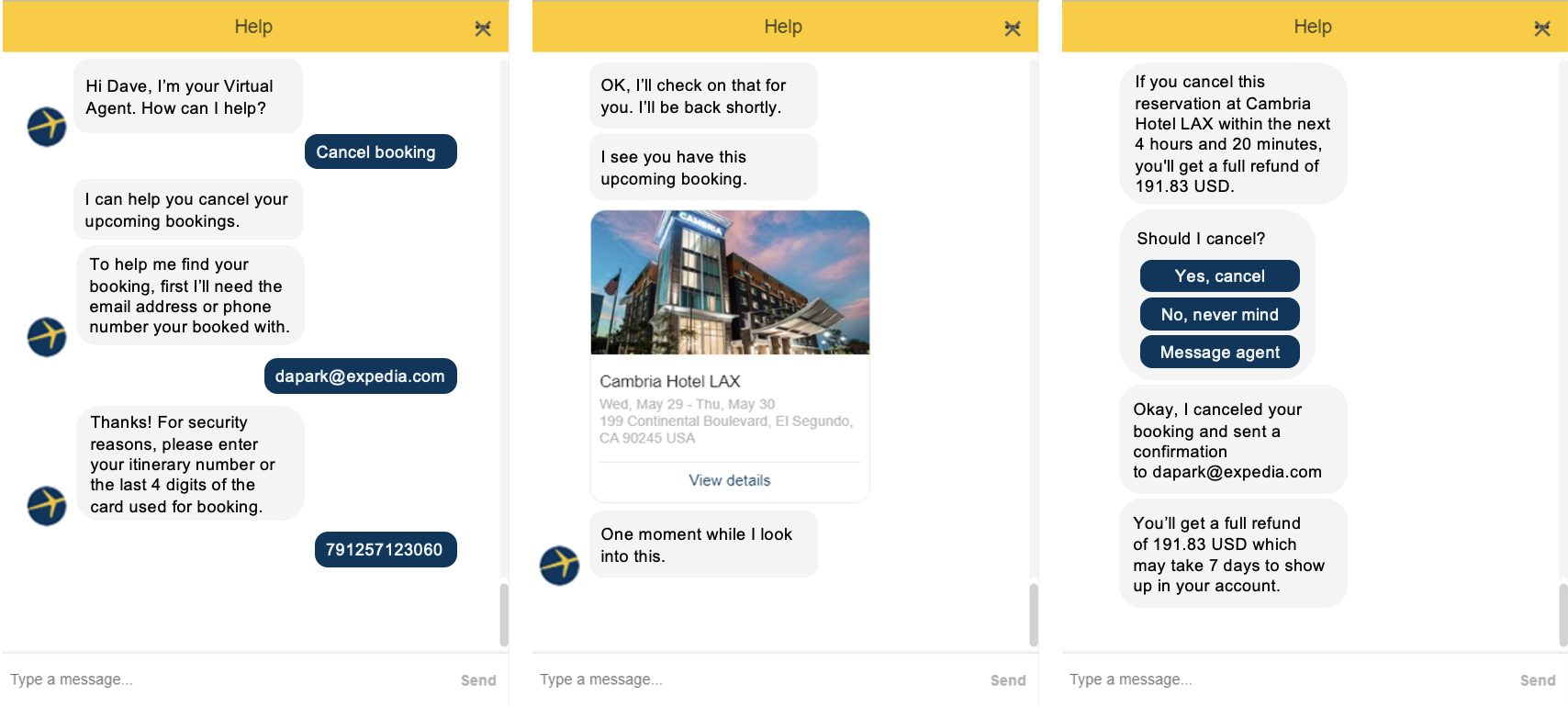
Image: example for brand Expedia.com
Lodging Cancel and Rebook
Mar. 2021 – Now
Hotel Collect Outside Penalty bookings makes up 18% of the Lodging Change volume routed to a chat agent. Due to platform limitations, Chat agents are unable to take payment in the chat window. It requires a phone call to the customer forcing channel switching. There are 3 Payment Scenarios (Hotel Collect with Deposit, Hotel Collect Premium, and Hotel Collect Payment Schedules) for Hotel Collect bookings that require hard changes to be done as a cancel rebook.
Given there is nothing additional that an agent does for a Hotel Collect booking that a customer can’t do for themselves (cancel/rebook), I lead the design to build a system informing customers that they can’t change their booking and need to cancel rebook which will help reduce customer effort. In this way, we could also prevent customers from routing to an agent, which will increase self-service rates. For this project, to help force simplicity and make the experience easy for customers to follow while achieving the self-service goals and business goals, I crafted 3 different workflows and mocks for a usability study.
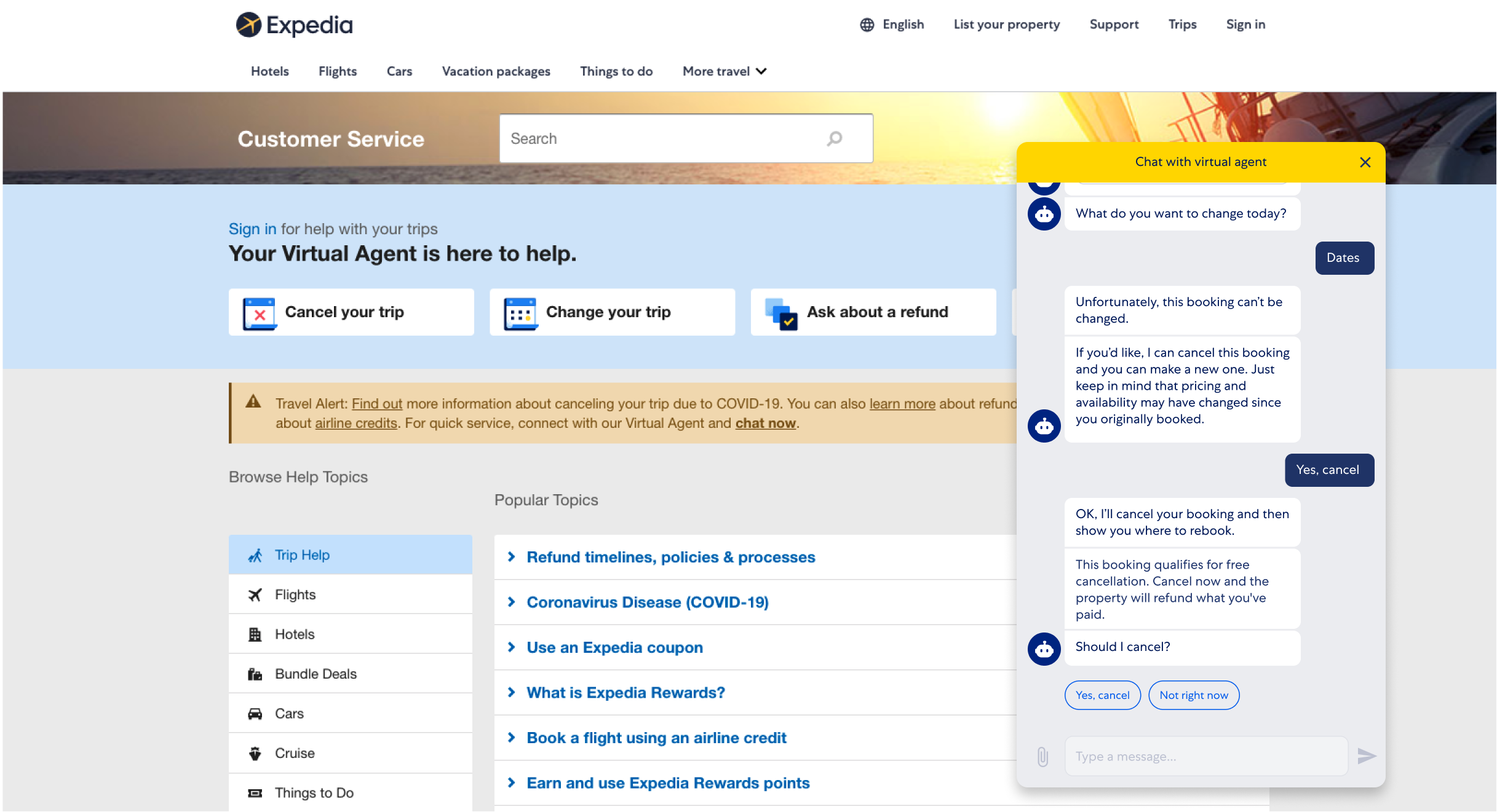
Find it interesting and would like to know more? Try and play with the prototype here.

